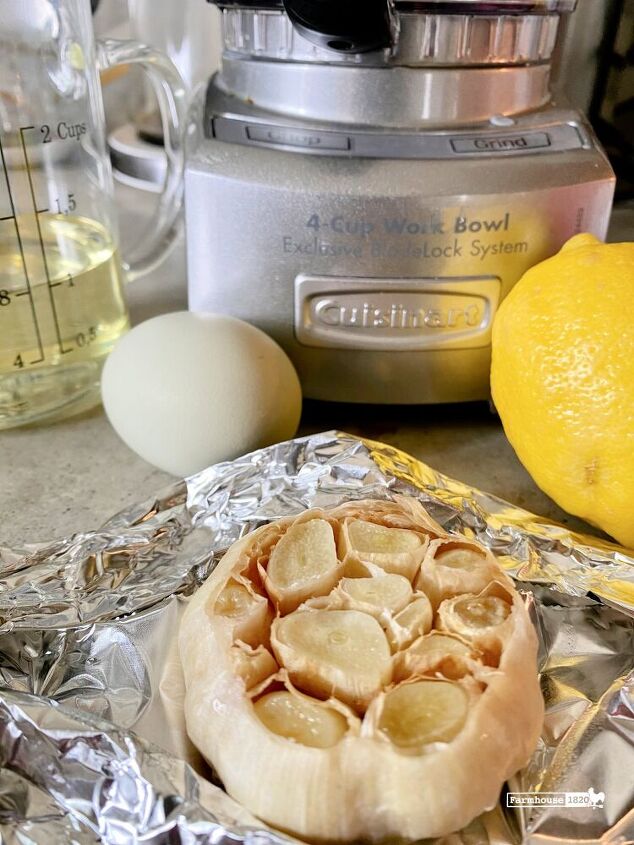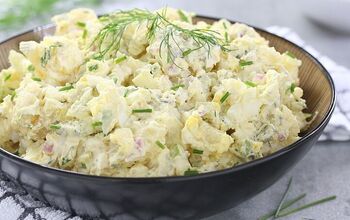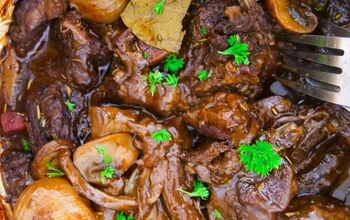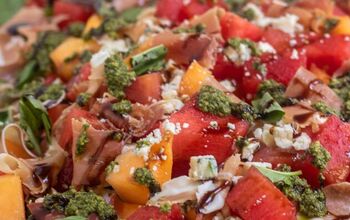Is Making Homemade Mayonnaise Worth It?

I’m in the test kitchen today, checking out a few different mayonnaise / aioli recipes to see if making homemade mayonnaise is worth it. You may be surprised at my conclusion.
If you ever venture into our pantry, you may notice that I always have a few jars of mayonnaise on hand. And when I say a few, I’m talking at least 5 large jars. Thing is, I use mayonnaise in several recipes including salad dressings, dips, deviled eggs and even just alone. I’m a big fan of the stuff, staying loyal to one brand, Hellman’s. It’s my fave and although I’m not getting paid to toot their horn, I feel I would be remiss to write a post dedicated to mayo and not detail my recommended.
Though I dig the store bought kind, you know me – I had to go into the test kitchen and venture out and come up with my own homemade recipe. My inspiration comes from a local French restaurant that serves perfectly cooked fries with a homemade garlic aioli on the side. Aioli is fancy for Mayonnaise. Same thing.
Making a mayo is much like making a hollandaise or a béarnaise sauce in that there’s egg yolk and oil involved, with the oil being adding in just a trickle of a stream to keep the sauce from separating. Kinda high maintenance, which lead me to ask myself, is making homemade mayonnaise worth it.
One slight over-pour of oil and the sauce is history. It’s very unforgiving, so getting it right the first time is key. And challenging. I learned a couple excellent lessons for you that I’m going to pass along.
First though, I decided to do a side by side comparison of the store-bought and then homemade, with the addition of roasted garlic to each. For the semi-homemade, let’s call it, I combined a cup of mayo and about 8 large roasted garlic cloves to the bowl of a food processor, and pulsed until combined and smooth. Exhibit A.
For the homemade, I researched a few recipes, and tried one out that had above average ratings. I use a small food processor (here is the one I highly recommend and is a great bang for the buck) for all of my sauces because it has a tiny hole at the top for exactly this purpose of adding melted butter and/or oil in a slow drip. I added all ingredients with the exception of the oil into the bowl, pulsed until combined, and then while on full speed, I slowly added the oil. However, it became obvious pretty quickly that I poured the oil even too heavily for the little hole. Too much at once, clearly, although I thought I was adding it slowly. I took off the lid, and I was left with this:
The sauce was separated and once this happens, there’s no recovering it. I had to cut my losses and start over. Epic fail.
For the second attempt, I tweaked the recipe as I determined that it needed more proteins and an additional binding agent to emulsify properly. Two egg yolks and a heaping teaspoon of dijon mustard, and cutting back the oil to 3/4 of a cup rather than a full cup was the route I was going. This time adding the oil in a slow drip rather than a stream may have been tedious, but the technique worked, and the outcome was a perfect velvety mayonnaise. Exhibit B
I fried up a batch of French fries, sprinkled salt and tarragon over top, and let the taste testing begin.
The semi homemade tasted good. Tasted like mayonnaise with roasted garlic added. Would work well in a pinch. Then I took a nice dip into the homemade. Took another dip. And then another. The stuff was ridiculous! So good! The four of us just sat in front of those fries and kept dipping them in the homemade mayo.
So here’s my verdict. Is making homemade mayonnaise worth it?
Yes, yes it is!!
The roasted garlic gives it that delicious nutty flavor and since it’s roasted, keeps that harsh heat flavor away. The lemon juice and champagne vinegar add that brightness that takes mayo to a whole new level, and the dijon mustard adds just the right amount of tang.
Making homemade mayonnaise is worth every slow drop of oil, but if you’re really low on time, roasted garlic added to store bought is certainly suffice in a pinch. Both have their virtues, but the homemade mayonnaise has my vote.
Here’s my recipe for Roasted Garlic Mayonnaise
Is Making Homemade Mayonnaise Worth It?
Recipe details
Ingredients
- 1 head garlic large
- 1 Tbsp olive oil
- 2 egg yolks
- 1 tsp dijon mustard heaping
- 2 tsp fresh lemon juice
- 1 Tbsp champagne vinegar
- 1/2 tsp fine grained salt
- 3/4 cup canola oil
Instructions
- Preheat oven to 375 degrees.
- Cut the top off of the head of garlic. Place on sheet of heavy aluminum foil. Drizzle olive oil over top, and fold up the foil around the garlic, making a purse.
- Roast in the oven for 30 - 40 minutes until garlic is golden and soft. Let cool completely.
- In the bowl of a food processor, combine the egg yolks, dijon mustard, lemon juice, salt, champagne vinegar and garlic, squeezing each clove out and into the bowl.
- Pulse just combined. Scrape sides of food processor.
- With the food processor running, SLOWLY add the oil by small drips until fully emulsified.
- Serve along side fries, beef, and fish.
- Can be stored in an air-tight container for up to a week in the fridge.































Comments
Share your thoughts, or ask a question!
Try using a good inversion blender (Bamix) and use a narrow jar or container that comes with it. Put your whole egg in first, then seasoning, then oil. Put the immersion blender with the emulsifying blade down on top of the egg, covering it. Turn on the blender and slowly pull it up the jar. I can never make a good mayonnaise the other way but this works every time.
You can save mayonnaise, hollandaise after it's separated, restart with clean bowl with teaspoon of lemon or vinegar and whisk by hand (with a towel draped around the base to keep steady!). Add again the spent mayonnaise drop by drop, until a gradual stream, while whisking feverishly, them steady by steady until it is amazingly returned to a creamy spread.
Another thing is I am against using canola oil for many reasons but;
High levels
when we cook with it), it produces high levels of butadiene, benzene, acrolein, formaldehyde and other nasty compounds. These chemical compounds, combined with increased free radicals create the perfect environment for cancer growth. Researchers have found that cancer cells feed on the oleic acid in canola oil.Nov 21, 2018.
it is bitter smell when cooking, try cooking an omelette compared to using other oils, see the color, the smell, the texture..! Some of my thoughts!